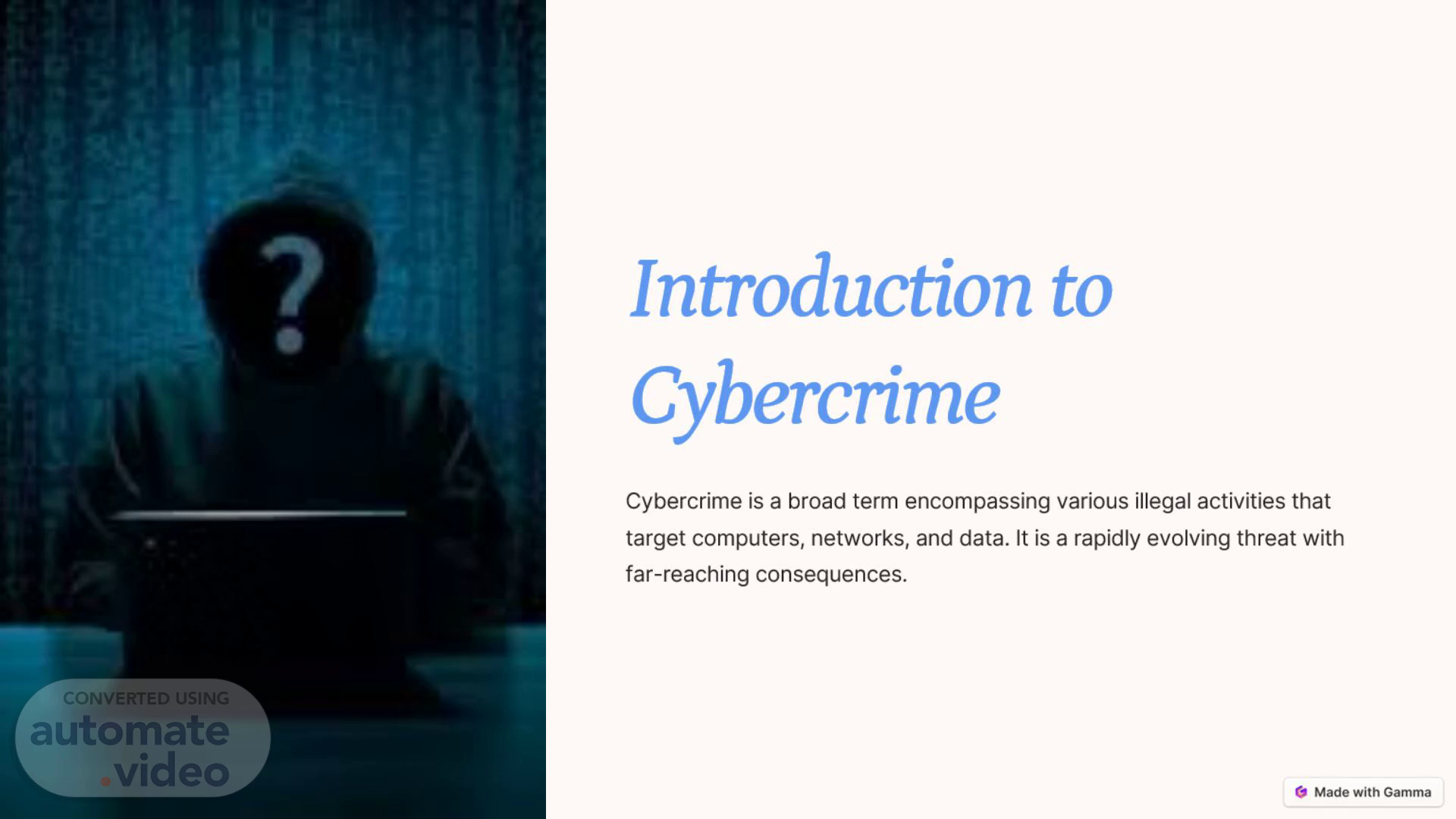Scene 1 (0s)
[Audio] Introduction to Cybercrime Cybercrime is a broad term encompassing various illegal activities that target computers, networks, and data. It is a rapidly evolving threat with far-reaching consequences. Cybercrime is a broad term encompassing various illegal activities that target computers, networks, and data. It is a rapidly evolving threat with far-reaching consequences..
Scene 2 (25s)
[Audio] Types of Cybercrime Hacking Malware Phishing Unauthorized access to computer systems, often for malicious purposes like data theft or disruption. Software designed to harm computers or steal data, including viruses, worms, and ransomware. Tricking users into revealing sensitive information through deceptive emails, websites, or messages. Fraud Financial crimes involving deception, such as credit card fraud or identity theft. Types of Cybercrime Hacking Unauthorized access to computer systems, often for malicious purposes like data theft or disruption..
Scene 3 (1m 1s)
[Audio] Hacking and Malware Hacking Malware Hackers exploit vulnerabilities in software and networks to gain unauthorized access. Malware can be used to steal data, disrupt operations, or hold systems hostage. Exploiting weaknesses in software and network security Viruses: self-replicating code that spreads to other systems Gaining access to sensitive information or disrupting services Worms: spread through networks and can cause significant damage Ransomware: encrypts data and demands payment for its release.
Scene 4 (1m 33s)
[Audio] Identity Theft and Fraud Identity Theft Financial Fraud The illegal use of another person's personal information without their knowledge or consent. Crimes involving financial transactions, such as credit card fraud or online scams. Social Engineering Data Breaches Manipulating people into revealing sensitive information or granting access to systems. Unauthorized access to databases containing personal information, leading to widespread identity theft..
Scene 5 (2m 6s)
[Audio] Cyberbullying and Online Harassment Cyberbullying Repeated online harassment, bullying, or intimidation, often targeting specific individuals. Online Harassment Any form of unwanted online contact, such as stalking, threats, or offensive messages. Trolling Posting inflammatory or disruptive content online to provoke reactions or disrupt conversations. Doxing Publishing personal information of individuals online without their consent, often with malicious intent..
Scene 6 (2m 43s)
[Audio] Cybercrime Trends and Statistics Ransomware attacks Phishing attempts Data breaches Increased significantly in recent years Millions of phishing emails sent daily Millions of records compromised annually.
Scene 7 (2m 58s)
[Audio] Cybercrime Investigation and Prosecution Evidence Collection Gathering digital evidence from computers, servers, and networks. Forensic Analysis Examining digital evidence to identify patterns, suspects, and motives. Prosecution Building a case and presenting evidence in court to secure convictions. Sentencing Imposing punishments on convicted cybercriminals..
Scene 8 (3m 27s)
[Audio] Cybercrime Prevention and Mitigation Strong Passwords Security Software Use complex and unique passwords for each account. Install and update antivirus and anti-malware software regularly. Firewall Be Vigilant Use a firewall to block unauthorized access to your computer or network. Be cautious of suspicious emails, links, and attachments..
